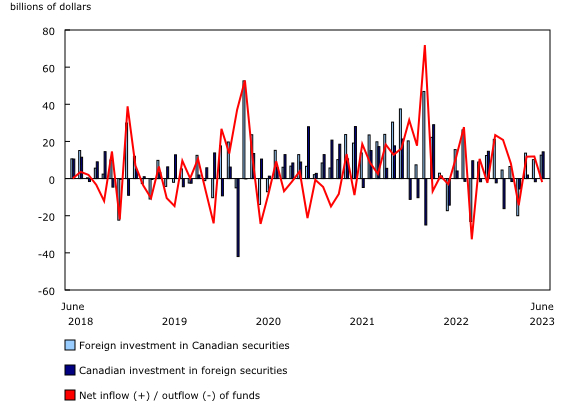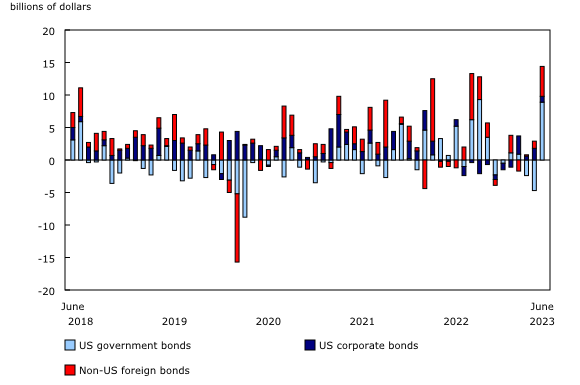Economic growth depends on many factors. One such important factor that often goes overlooked by casual Canadians is Foreign Direct Investment.
Foreign direct investment (FDI) typically can be defined as the purchase of an asset in another country, such that it gives direct control to the purchaser over the asset (e.g. purchase of land and building). In other words, it is an investment in the form of controlling ownership in a business, in real estate or in productive assets such as factories in one country by an entity based in another country. It is thus distinguished from a foreign portfolio investment or foreign indirect investment by a notion of direct control.
The origin of the investment does not impact the definition, of an FDI: the investment may be made either “inorganically” by buying a company in the target country or “organically” by expanding the operations of an existing business in that country.
How Does Foreign Direct Investment (FDI) Work?
Companies or governments considering a foreign direct investment (FDI) generally consider target firms or projects in open economies that offer a skilled workforce and above-average growth prospects for the investor. Light government regulation also tends to be prized. FDI frequently goes beyond mere capital investment. It may include the provision of management, technology, and equipment as well. A key feature of foreign direct investment is that it establishes effective control of the foreign business or at least substantial influence over its decision-making.
The net amounts of money involved with FDI are substantial, with more than $1.8 trillion of foreign direct investments made in 2021. In that year, the United States was the top FDI destination worldwide, followed by China, Canada, Brazil, and India. In terms of FDI outflows, the U.S. was also the leader, followed by Germany, Japan, China, and the United Kingdom.2
FDI and GDP
FDI inflows as a percentage of gross domestic product (GDP) are a good indicator of a nation’s appeal as a long-term investment destination. The Chinese economy is currently smaller than the U.S. economy in nominal terms, but FDI as a percentage of GDP was 1.7% for China as of 2020, compared with 1.0% for the U.S. For smaller, dynamic economies, FDI as a percentage of GDP is often significantly higher: e.g., 110% for the Cayman Islands, 109% for Hungary, and 34% for Hong Kong (also for 2020).
Canadian investors acquired $14.4 billion of foreign securities in June, the largest investment in seven months. Meanwhile, foreign investors increased their holdings of Canadian securities by $12.6 billion, following two months of strong investment.
As a result, international transactions in securities generated a net outflow of funds of $1.9 billion in June and ended the second quarter with a net inflow of funds of $21.8 billion into the Canadian economy.
Canadian investors acquire US government bonds
Canadian investment in foreign securities totalled $14.4 billion in June, the largest amount since November 2022. The activity in June 2023 targeted US government bonds and, to a lesser extent, non-US foreign bonds. Overall, Canadian investors increased their holdings of foreign securities by $14.6 billion in the second quarter, after reducing them by $23.4 billion in the first quarter.
In June, Canadian investors increased their exposure to US government bonds by $8.9 billion, after two months of divestment. US long-term interest rates were up in June. At the same time, Canadian investment in non-US foreign bonds, mainly bonds of foreign governments and international organizations, reached $4.6 billion. In contrast, Canadian investors reduced their holdings of foreign equities by $1.2 billion in June, nearly all of which were non-US foreign shares.
Substantial foreign investment in Canadian federal government paper
Strong foreign investment in Canadian securities continued in June, as investors purchased $12.6 billion worth, for a total of $36.5 billion in the second quarter. Foreign investment in June mainly targeted federal government money market instruments for a second consecutive month.
Foreign investors acquired $8.4 billion of federal government paper in June, following a record $11.8 billion investment in May. In June, the Bank of Canada raised its policy interest rates for the second time in 2023, and the Canadian short-term interest rates rose to the highest levels since January 2001.
In June 2023, non-resident investors also purchased Canadian bonds (+$8.1 billion) but divested of Canadian shares (-$3.9 billion) for a seventh consecutive month. June’s activity focused on Canadian banking sector securities, as foreign investors acquired new issues of foreign currency bonds and reduced their exposure to shares.







